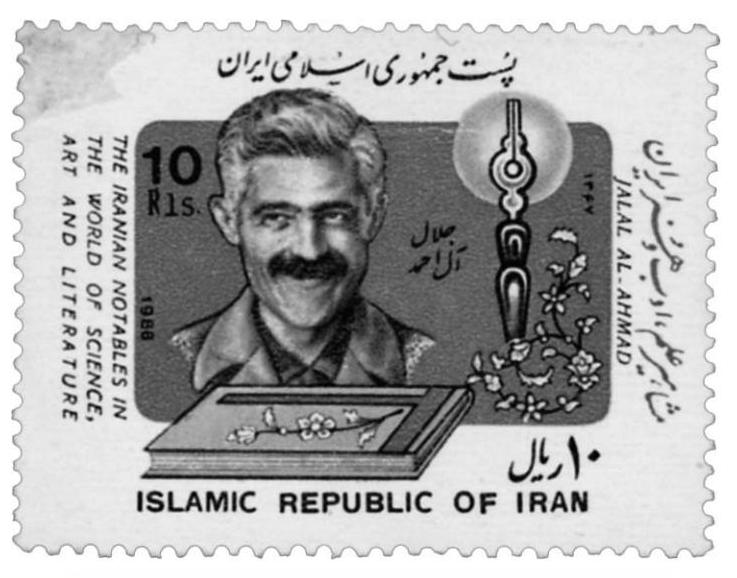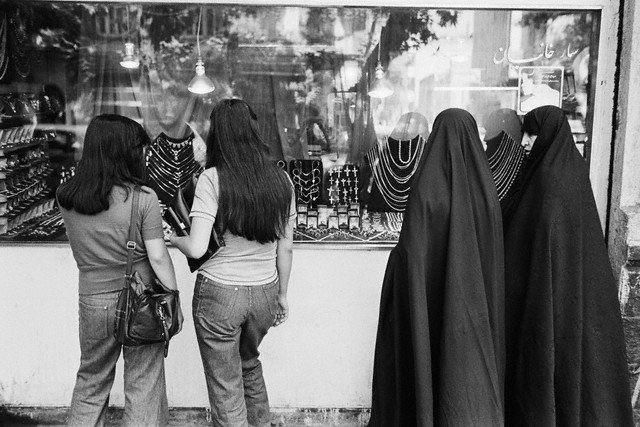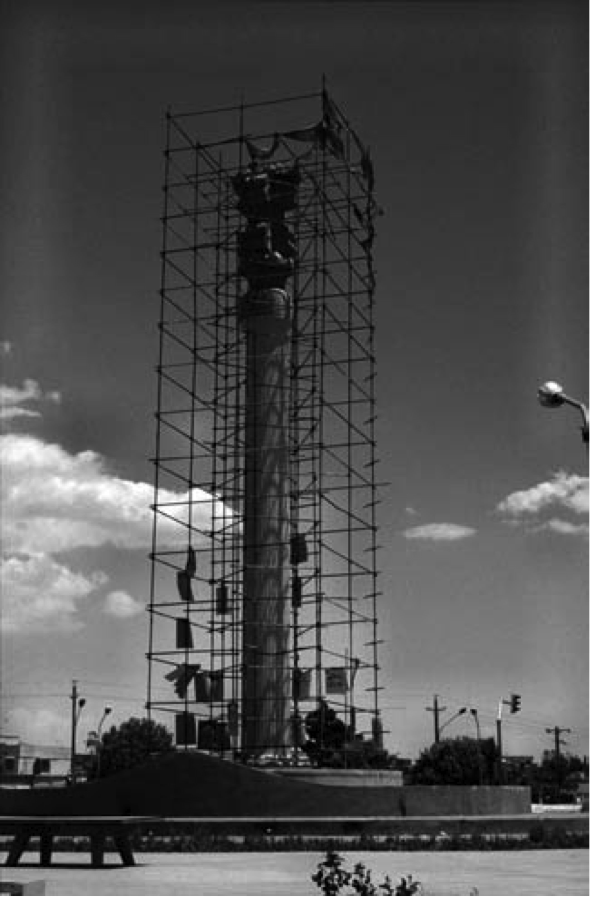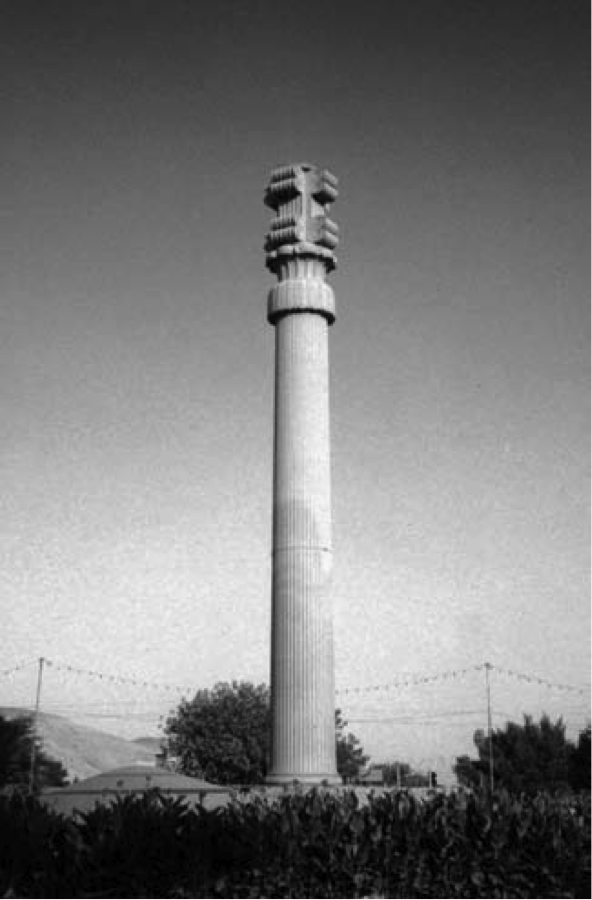At a time when so many (English-language) books on Iran primarily focus on its political history, ideological struggles, and ‘modernization,’ professor Setrag Manoukian’s City of Knowledge in Twentieth Century Iran: Shiraz, History and Poetry (2012) offers something different. Focusing on the city of Shiraz, Manoukian examines why it has emerged as a place so saturated with national significance, the techniques used to achieve this, and just how fraught this process continues to be.
To this end, City of Knowledge invites us to test our conceptual comfort zones by examining contemporary Iranian society through a different set of questions. Rather than rehearsing narratives about political winners and losers, we are asked to consider the techniques of power whereby winning and losing were made legible. Instead of taking for granted the glorious past of Iranian civilization, we are challenged to examine how such a past was made available for ordinary Iranians as something to glorify. Whereas most analyses take Tehran as the normative lens through which Iranian society is viewed, we are presented a different perspective through the city of Shiraz.
In this Q&A, we discuss some of these concerns with Setrag Manoukian, an anthropologist focused on modern Iranian society and history (McGill University, Montréal). We explore what brought him to take up such concerns, the ways in which he approaches them, and why they matter.
1. AjamMC: At the outset of your book, City of Knowledge, you take pains to describe your “vantage point” into Iranian history and society. You describe this vantage point as a “provincial perspective.” I wish to begin this discussion on the same note. What do we stand to gain by adopting such a perspective in our knowledge of contemporary Iran, and how does the city of Shiraz (as opposed to Tehran) enable this perspective?
SM: Anthropology is about perspective and the possibility of a different point of view. What is usually taken for granted can be understood in a different light. In the book, I tried to de-familiarize readers from the widespread habit of taking Tehran as a representation of twentieth century Iran as a whole, and of discussing contemporary Iran as if it were Tehran writ large. This geographical shift is also conceptual. Politics and religion dominate research about Iran in the humanities and social sciences. There are obvious and justifiable reasons for this. However, the consequence is often an idea of politics and religion that takes these categories for granted. I try to open them up through a reflection on the production of knowledge, focusing on the city of Shiraz as a vantage point to gauge the relevance of the category of culture in the history of modern Iran. Here of course I am working in the footsteps of many other social scientists and historians. There is a rich set of works on Iranian cities, especially from the 1960s and continuing up to today (Yazd, Qom, Kerman, Abadan, and several others, including Shiraz).
It was important for me not to present Shiraz as a self-contained analytical unit. This is the idea of the “province” as a zone of transformation, which is linked to things happening elsewhere, in the country and abroad, but reworks these trajectories that are passing through town and re-launches them towards different directions. Tehran, but also Bombay in the past, and Los Angeles today, have been important for Shiraz. At the same time, Shiraz is a crucial trajectory to understand what is going on in Tehran and possibly in Los Angeles as well.
There is something emblematic, almost stereotypical about the idea of Shiraz as a site of cultural production, especially in relation to some of the Iranian “national cultural treasures” such as poetry for example. So “provincial perspective,” again in anthropological fashion, does not mean to de-familiarize in order to argue something “original,” or “new,” but rather the opposite. It is an invitation to reflect on how the habit of thinking about Shiraz as the cradle of Iranian culture has taken hold, and what we can learn from this process of sedimentation. When you mention Shiraz, people in Iran and abroad immediately connect with the great poets of the city, and the gardens, and today the wine (but that’s a different story, linked to the current relationship between industrial vinery and marketing). These images have a complex genealogy, in which European orientalism plays a part, and carry with them a whole array of affects that would need to be attended in detail.
In the book, I focus selectively on some of the cultural aspects. I am specifically interested in tracing not the history of the “glorious” Shiraz of Sa‘di and Hafez (and Ruzbihân and Mullâ Sadrâ), but the day-to-day workings of a contemporary city that addresses its own past with all its ruptures and contradictions; a city that comes to terms with the way in which it is perceived locally, nationally and globally and does this through buildings as well as publications and conversations.

This is also what I mean by “provincial perspective,” and though probably the book is not explicit enough on this point, in my view Shiraz is a good laboratory to think “the production of culture” and its relationship with technological and conceptual transformations: let’s say the question of modernity, more generally. One could indeed use the expression “Shiraz: province of the twentieth century” in reference to Walter Benjamin’s idea of Paris as the laboratory of nineteenth century modernity. This in my view would highlight how processes taking place in Shiraz are linked to a series of transformations that characterize the twentieth century more globally: changing technologies in the production of knowledge, capitalist transformations, and specific forms of management of people and things. The risk with references to provinciality is to mislead readers into thinking that Shiraz has been at the margins of these twentieth century processes, or somewhat “left behind” as the word “province” might evoke. This is not what I mean, and of course Shirazis are very sensitive about this!
2. AjamMC: The concept of ‘culture’ or farhang is often invoked in Iranian public discourse. You elaborate on its introduction into the vocabulary of the (Iranian) state in the 1930’s, and explained it to have been loaded with a “prescriptive force.” What do you mean by this? And to what extent does this prescriptive force still animate contemporary invocations of farhang in popular or official discourse?
SM: There is a lot to unpack in this regard, both historically and conceptually, and the book does not claim to address the genealogy of the idea of culture, in its disciplinary or national declinations. On Iran, among other essays, there is Nematollah Fazeli’s excellent book, and Farzin Vejdani’s recent article about the 1930s in the International Journal of Middle East Studies. Let’s just say, in rough terms, that between the second half of the nineteenth century and the beginning of the twentieth, “culture” as a word in Iran begins to name a spectrum of emotions, thoughts, actions and thus habits. Once named, culture takes up a certain autonomy, it becomes an object of concern, discussion, intervention, something that can be invoked, deployed, used to explain and to build arguments but also to manage situations, people and things. This is what I mean when I write about the force of culture.
With the adjective “prescriptive” I wanted to underline how culture as an object of concern entails a discussion about how things are and how things should be. The objectification of culture is accompanied by both a reflection on the state of things, and a project of transformation involving a more or less systematized push to intervene, to direct, to modify relationships, spaces, temporalities, habits of thought and action. At its inception, this “prescriptive force” related to the state, and the Pahlavi state in particular. Yet one should not attribute agency to the state as such; it is a complex movement in which many dimensions play a role. Subjects feel interpellated by culture. There is an interest in understanding the habits that one can name culture, “our” culture, (how are we? Who are we? What’s our culture?); but also, at the same time, a sense of being deficient, of lacking something (this culture we have is not the one we should have, the one we should aspire to, the one we should implement). The concern is also as much about society as it about the self.
Of course, these were not new reflections per se, there is a long tradition in Iran (and more generally in the Muslim world) of “prescriptive” writings about society and the self. However, the adoption in the nineteenth-thirties of the word farhang into Persian to translate “culture” and “civilization,” should not be seen as a simple import from Europe. On the contrary: farhang is a word that is perceived as naming something that is at once old and yet contemporary (i.e.: in its reference to the European discussions about “culture”).
Moreover, while we are thinking historically, the question should not be about dating the inception of this discourse around farhang merely in order to characterize a particular period or policy or public opinion. Instead, the articulation of farhang in Iran and its prescriptive force can be used to reflect on its operations (i.e. the things it was used to do and legitimize) in the past and in the present. The question should be what do the operations of farhang’s prescriptive force suggest about the history of modern Iran, and what is happening now? Late nineteenth century investments into “reforms” as well as disciplinary articulations in the twentieth century, all the way up to contemporary discussions about “cultural engineering” can be understood as linked to the emergence of the idea of “culture” as a referential ground (an object of concern and something to be manipulated). Let me emphasize again. I am talking about an approach, not an actual phenomenon: “culture” as a point of view that can offer a perspective on modern Iran. This is different (it is actually the opposite) from arguing that culture explains everything.
3. AjamMC: Clearly, then, this concept of farhang or “culture” has been central to the (very modern) project of problematizing society; of reflecting upon how it functions, what is lacks, how to reform it etc. What are some concrete examples of such problematization? What is the “cultural” stuff of its concerns?
SM: In the emergence of “culture” as a referential ground in Iran since the early twentieth century, one can see at work two intertwined mechanisms. By mechanism I mean a set of operations that include discourses, practices but also the subjectivities (the beliefs, experiences, feelings and outlooks) that are formed in the process (I am referring to Foucault’s dispositif).
First, there is a mechanism one might term a “mechanism of judgment”. It is mainly discursive. It is composed of a consideration of the state of affairs of the country, and its attendant critique. One of its most widespread versions follows this structure: “look who we were, and see now what we have become” or, if the argument is more analytical: “what is wrong? This is what is wrong…” These amount to all-encompassing diagnoses of cultural ineptness, and calls for radical transformations of self and society. These are the great discourses of morality: discourses, and therefore personalities that speak of and to Iran, such as Jalal Al-e Ahmad and Ali Shariati, but also, in previous generations, personalities such as Ahmad Kasravi to just name one, or in more recent times, political figures from different camps. But this discourse is prevalent in everyday life as well. It was also often the talk around bookstores in Shiraz at the time of my research.

This mechanism of judgment entertains a specific relationship to power, but it can be located across the political spectrum, and it can be religious, or secular. It can entertain different relations with what each of them identifies (either explicitly or implicitly) as “culture:” and therefore a different relationship to the past, but – whether religious or secular – they all share a sense of lack and therefore an urge to address it. They cut across constituencies and outline a force field around which concerns and actions take shape. What defines this mechanism is the force of the pronouncement. Ultimately I think this is a mechanism of desire.
There is also a second mechanism, what I would call the “mechanism of management”: the intervention into a state of affairs to change it in relation to “how things should be.” This mechanism has its own discourses. Ultimately, it is in the efficacy of the action that it finds its form: great or small projects of reorganization, intervention, administration and so on. Examples would include the transformation of urban space, but also of education, health and life. And this is the terrain of the great managers, the tireless organizers of the state administration, and of rules and regulations of different sorts, but also those that today are so concerned with “cultural engineering.” This is also a mechanism that pertains to both society and the self, often seen as closely related. This prescriptive mechanism of management, of constant intervention, is also structured around “cultural” questions. Yet it is less concerned with overall analysis and critique and more focused on direct interventions. I do not think it is by chance that “efficiency,” for example, is a widespread concern in contemporary Iran, and that there is a whole idea of politics that is concerned with questions of good management and the efficient delivery of services, goods and money rather than with ideological concerns. The use of the term culture to refer to a whole set of practices in the domain of management is related to the relevance of these dimensions. I did not carry out systematic research on all the compounds in which one finds references to farhang, but I keep noticing it everywhere. So farhang-e apartemân-neshînî for example, is used to refer to all that you are supposed to do as someone living in an apartment, farhang-e trafîk is about behavior in traffic and so on.
I think that the study of these mechanisms and their “prescriptive force” could be a way to understand some long term concerns that have occupied people in Iran in the last one hundred years or so. These concerns about “what/who we are” and “what/who we should become” offer a grid to read the 1930s, the 1960s, 1979 but also 2009.
4. AjamMC: You explain that representations of Iranian society are often framed in terms of a disconnect between what appears to be happening on the surface of things and what is really going on underneath. This “bifurcated view of Iran”, as you put it, invites speculation about the true desires and dispositions of Iranians. In other words, such a framing repeatedly presents them as something to be deciphered: why did so many people really participate in the elections? What trendy fashions actually lay hidden beneath the black chadors of women? What truly brings some people to weep and lament during Ashura sermons?
In your opinion, what accounts for the popularity of this bi-polar framing of Iran? To what extent does it merely facilitate the reproduction of conventional orientalist readings on the part of foreign observers? Or is there something peculiar about contemporary Iranian politics and social practices that give credence to such a framing?
SM: Colonial discourses discuss the dissimulation of the colonized/others in a variety of ways, either as a mark of their “irrationality” (they do not know how to distinguish truth from falseness) or of their duplicitous nature (they are hiding something). This kind of discourse has been particularly pervasive in relation to Iran. Sometimes it has religious connotations, linked to Shiism and its imputed esoteric character or to the institution of taqiya (i.e.: the denial of religious identity in circumstances of dire persecution). But it is really intended as a trope to discuss Iran’s “society” as a whole. For example, one can find it in the late nineteenth century founding texts of Arthur De Gobineau and Lord Curzon.
It is still deployed by foreigners and Iranians, often intertwined with more supposedly “sociological” analysis identifying the root of these dissimulative practices in social arrangements or political contradictions. In this sense, it is related to the question of culture we discussed above. Before the revolution, analyses that adopted the bifurcated view linked dissimulation to the elitism of the administration, and/or to the family based nature of social relations. Today it is often discussed in terms of the fracture between public and private lives, which is often described as “schizophrenic.”

The bifurcated view of Iran, both in academia and in the media, is popular because it offers explanations: it identifies behaviors and thoughts and links them to causes. It offers answers and therefore it is appealing. This is easily understandable.
After all, the idea that surfaces are deceiving, and one needs to look “underneath” in order to get at the truth of the matter, is part of the heritage of social sciences themselves. This is also the reason why this cannot just be dismissed as simply a colonial conceit. In some ways it is, but making it explicit is not going far enough. If one stops searching for revelatory explanations and focuses instead on the processes that trigger this bifurcated view, and tries to make sense of them as specific sets of thoughts and actions, one might begin to understand the landscape of operations that such discourses delineate. And it seems to me that, speaking in general terms, these discourses and practices point towards a relationship with the world that entails interpretation, a semiotic relationship, in which the apparent is always a sign of something else. In interpretation there is pain and pleasure, excitement and violence, and all the gradients in between. And interpretation is never separated from technology: it is a question of how certain forms of thought and action take shape in relation to particular devices. So, the bifurcated view is also a question about media: it is a question about the possibilities and limits of communication in general, but also in relation to the current ecology of media. And of course questions of falseness, truth, and therefore publicness and secrecy are all at play. Ultimately, as you point out, the bifurcated view, is about a certain experience of the real.

Manoukian, “City of Knowledge” (New York: Routledge, 2012) p. 63.
5. AjamMC: Iran’s 1978-79 Revolution has often been examined in terms of its economic underpinnings and outcomes, ideological sources and transformations, and identity politics. Your work, however, focuses on the more mundane process of how this historical event was actually inscribed onto buildings, texts, images etc. Such exercises worked to render the revolution as a break with the past, and the ushering in of a new era by erasing or modifying certain surfaces. You describe these exercises as the “editing of culture,” and suggest that such editing is actually a “modality of knowledge.” Please expand on this. Was such “editing” unprecedented in Iran prior to the revolution? What kinds of things have been particularly subject to such editing following the revolution, and has Shiraz been unique (as both an arena and object) in this regard? Finally, in what way does the process of editing constitute a way of knowing?
SM: When I started to spend time in Iran in 1989, I was struck by the effort to mark a definite break with the pre-revolutionary space/time, as well as by the presence of traces of this past. On the one hand, there was the effort to inscribe the revolution and the new order of things on urban spaces and habits. On the other hand, there were always references to the past even, through these acts of inscription! Things have changed a lot since then, and this dynamic has become less evident.
Today, the interplay between inscriptions of the present and the future of the revolution still entails both what I call a reversal of the previous order, and (by default) the production of traces of the past that continues to return. The revolution needs to be constantly reasserted. In the process, it continues to both generate and erase what it claims to rebel against. Today the additional layer of the past of the revolution itself is caught in this interplay.
In the book, I analyzed the ways in which individuals and institutions make sense and relate to this context, and I called this “editing.” I used the word editing to describe the process of producing a text, an image or an object, because I wanted to avoid a conception of cultural production as constituted by the actions of a supposedly autonomous agent who creates with clear intentions and a free hand. Instead I wanted to reflect on cultural production as a process of modification and intervention that has a lot to do with circumstances and chance, and which is the result of multiple and often conflicting interventions. This is why I call editing a modality of knowledge.

Manoukian, “City of Knowledge” (New York, Routledge, 2012) p.63. (Photo: Setrag Manoukian)
I also analyze what happens to editing in relation to the process of “making things public” (make things available and visible to all for consumption). In the Islamic Republic, this entails a certain process of editing. Making things public is just one of the dimensions involved in editing.
But I think it is a crucial one to understand with regard to the production of knowledge in Shiraz; especially its most superficial artifacts, the ones that offer those stereotypical views of the city we started our conversation with. I found a whole set of strategies that transform, modify, and adapt things in order to make them public. Some of them are clever and subtle modifications of images and texts in order to make them “publishable;” other are ruptures, wounds one might say, inflicted on buildings and texts. Editing can be violent at times, but it also makes public things that otherwise would not be visible. It is productive. It allows things to circulate and it makes possible to write and discuss things that otherwise would not be available. I think it is important to also recognize that “public” does not mean free of constraints, transparent and unbound. There is a process that always mediates whatever it is that circulates for public consumption; a process in which politics, the market and a certain set of expectations about what is acceptable for public display all play an important role.
You are asking me if there was editing before the revolution. Yes there was, to the extent that editing is a way of conceptualizing cultural production. But it was different, and possibly something else altogether because the circumstances and the technologies of knowledge were different. Nor do I think that editing is specific to Shiraz, or to Iran. For me it was an entry point toward understanding the production of knowledge and its relationship to power, and I do not mean only political power, but the set of centripetal and centrifugal forces that are at play in the making of texts, images and objects. I use editing to describe the work of institutions and intellectuals around the city and discuss the most “public” forms of knowledge about Shiraz: books about the city, but also photographs and monuments.

Manoukian, “City of Knowledge” (New York: Routledge, 2012), p. 66.












3 comments
Thank you for this very informative interview. I enjoyed reading the book and reading the interview solidified my understanding of Dr. Manoukian’s central concepts. Thank you Behzad!